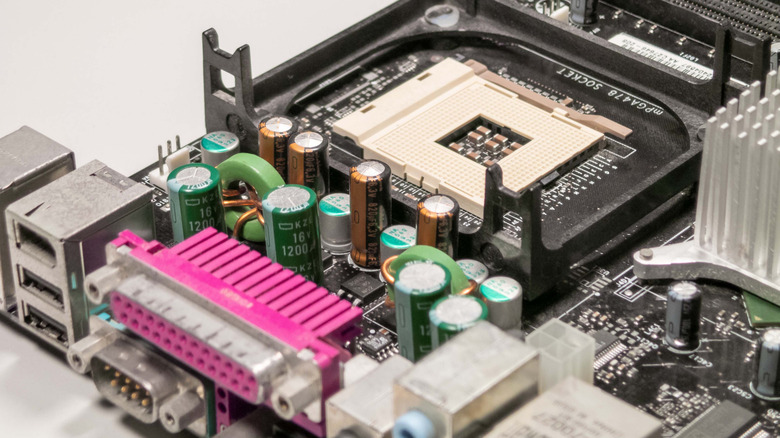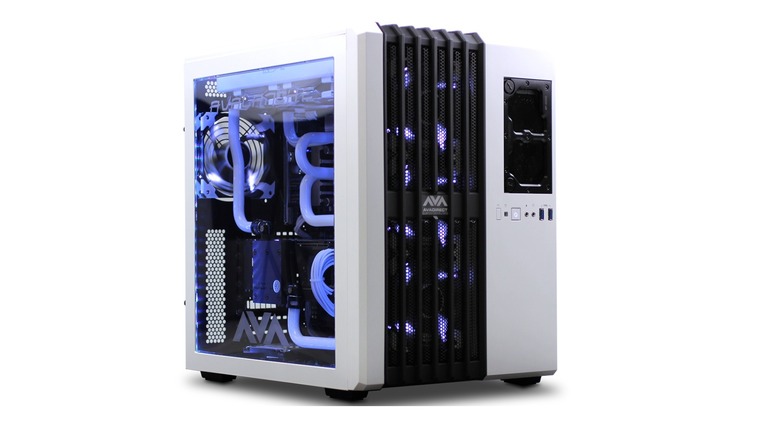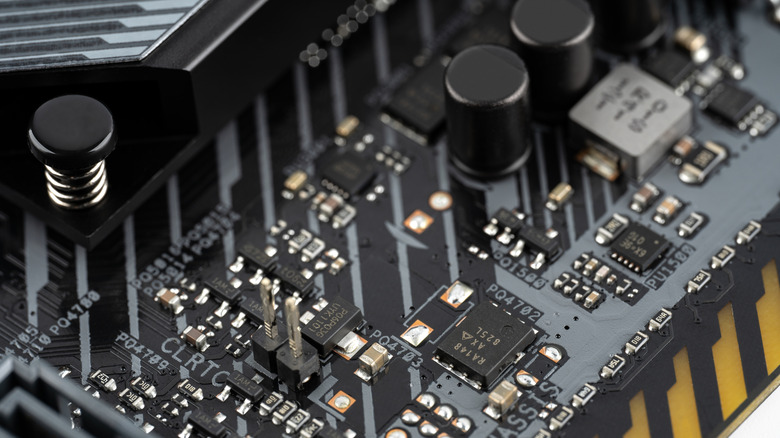What Does VRM Stand For & How Does One Work?
VRM is an essential part of every computer, but it's often given little attention. In fact, even many computer-savvy enthusiasts don't even know what it is or how it works. VRM stands for Voltage Regulator Module. Without a VRM to regulate the huge voltage coming from the power supply, your computer's more delicate, high-powered components, like the processor, could get fried in an instant. And if your VRM is faulty or fails, your CPU could start showing signs of failure, such as the blue screen of death.
But rather than simply bottlenecking the computer's power supply, the VRM's job is more nuanced. It must convert the incoming power into not just a lower but a consistent voltage. That way, your high-powered components don't receive dips or surges, which could potentially damage them. This consistency is achieved through an array of capacitors and inductors organized into special circuits around MOSFETs, which are specialized transistors. The "brain" of the VRM is an integrated circuit, often referred to as the PWM (Pulse Width Modulation) controller. Within the VRM, capacitors are responsible for resisting sudden changes in voltage, inductors are responsible for resisting sudden changes in current, and MOSFETs are responsible for limiting the incoming charge to specific levels.
The VRM can be found on the motherboard, right where it's needed the most: near the CPU socket. To identify yours, look between the motherboard's power connector and CPU socket. You should see one or more rows of cylindrical capacitors, cube-shaped inductors, and MOSFETs, which are typically black square chips. The VRM is soldered right onto the motherboard, so its name describes this entire array of capacitors, inductors, transistors, and the PWM controller contained within the VRM circuit.
Why modern computers need multi-phase VRMs
As described, the circuit of a VRM is composed of capacitors, inductors, and MOSFETs, which are all controlled by a PWM controller. The simplest schematic of a VRM is a single-phase circuit. Basically, in a single-phase VRM circuit, the MOSFETs act as switches to turn the flow of energy on and off, while the inductors and capacitors act as its signalers and current and voltage storage, respectively. The electrical engineering involved is pretty complex, but what's important for computer performance is how this process generates heat.
Whenever the MOSFET is switched off, the electrical input to the inductor, or "choke," is sent back. This switching of current results in a magnetic charge with nowhere to go other than dissipating into the air and surrounding components. As a result, every time the MOSFET is switched on and off, heat is generated. Leaks in the insulation around capacitors will also generate heat. Fortunately, it's a small amount of heat — the immediate temperature can be about 300 degrees Fahrenheit, but it happens in a fraction of a second. Unfortunately, the MOSFET switches on and off dozens of times per second, so heat becomes a significant issue in the design of a VRM.
Engineers found a simple way to solve the VRM's problem of heat dissipation. Rather than using a single-phase VRM circuit, modern computers rely on multi-phase VRMs to split the workload into smaller phases across a greater physical area. Using multi-phase VRMs can also improve accuracy and efficiency since each MOSFET only needs to be responsible for a fraction of the total power load. Thus, the heat is both lower in the areas where it's generated and more widely spread out.
Why quality VRM is important
VRM is one of the most important considerations when choosing a motherboard. While the VRM on basic-level motherboards is typically good enough to handle standard graphics cards and CPUs, an expensive motherboard might be worth it if you're using it for high-end processing and overclocking. Not only do premium motherboards typically have higher-quality VRM components capable of handling the demands of powerful processors, but they're also usually better at temperature control. Quality VRMs regulate voltage by using more phases to disperse the power load (and, therefore, the temperature) across a greater area. Basic VRMs use about four to six phases, while high-end VRMs break the current into as many as eight or more phases; however, the quality of the VRM components still plays a greater role in heat management.
The effectiveness of a VRM's heatsink is especially important when overclocking the CPU. Gamers often want to know how to overclock their PCs but may overlook the important role a quality VRM has in reducing the risk of overheating. Because an overclocked CPU generates extra heat, the nearby VRM components must be able to operate at higher temperatures without failing. VRM components also need to be able to meet the increased power demands from an overclocked CPU. As a result, the VRM adds extra heat to the already-heated system.
However, the price of a motherboard isn't necessarily a great indication of the quality of its VRM components. Instead of relying on the price, search for VRMs with leak-resistant capacitors. These are often marketed under different, eye-catching names such as "Dark Capacitors" and "Japanese Capacitors." High-quality inductors are also sold under different names, like "Super Ferrite Chokes." You can search the web for any particular name you don't recognize to see if it's a quality component.


